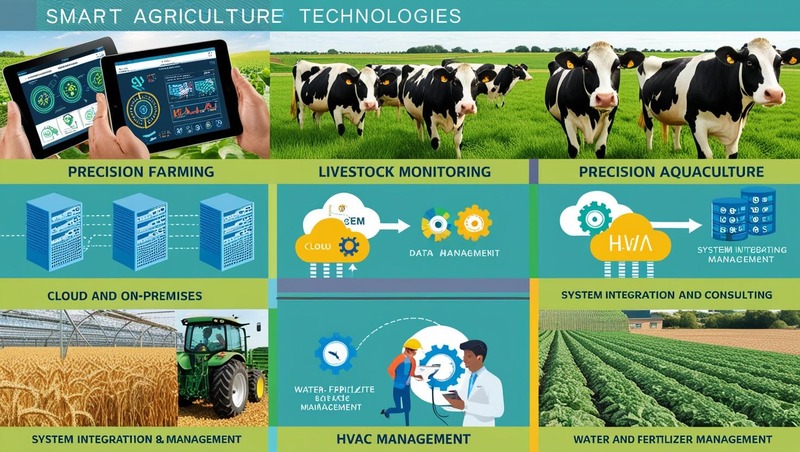Artificial Intelligence (AI) is playing a transformative role in reshaping the smart agriculture industry. As the global population continues to rise and arable land faces increasing pressure, the agricultural sector is turning to advanced technologies to meet the growing demand for food in a sustainable and efficient manner. AI is emerging as a critical enabler in this evolution, offering solutions that optimize productivity, reduce waste, and address labor shortages.
One of the most profound impacts of AI in smart agriculture lies in precision farming. Through the use of sensors, drones, and satellite imagery, farmers are now equipped with real-time data about their crops and soil conditions. AI algorithms process this data to guide decisions on irrigation, fertilization, and pest control. This targeted approach not only maximizes yield but also minimizes the use of water, chemicals, and other inputs, promoting environmentally responsible farming practices.

Download PDF Brochure @ https://www.marketsandmarkets.com/pdfdownloadNew.asp?id=239736790
Another area where AI is making significant strides is crop monitoring and disease detection. Traditional methods of inspecting fields are time-consuming and prone to human error. AI-powered computer vision systems can scan vast farmlands in a fraction of the time, identifying signs of stress, nutrient deficiencies, or pest infestations. Early detection enables timely interventions, significantly reducing crop losses and increasing the overall efficiency of farming operations.
In addition to crop management, AI is revolutionizing the way agricultural equipment is utilized. Autonomous tractors, harvesters, and drones are becoming increasingly common on modern farms. These machines use AI to navigate fields, plant seeds, harvest crops, and apply treatments with high precision. The automation of these labor-intensive tasks not only reduces reliance on manual labor but also ensures consistency and accuracy in farm operations.
Livestock farming is also benefiting from AI innovations. AI-enabled sensors and wearable devices monitor the health and behavior of animals in real time. These tools provide valuable insights into feeding patterns, movement, and vital signs, allowing farmers to detect illnesses early and take preventive measures. The result is improved animal welfare, reduced veterinary costs, and enhanced productivity.
AI’s influence extends beyond the farm into the agricultural supply chain. Predictive analytics help optimize logistics by forecasting demand, managing inventory, and reducing food spoilage. By analyzing data from various points in the supply chain, AI can improve efficiency, reduce costs, and ensure timely delivery of produce to markets. This data-driven approach enhances the overall resilience and responsiveness of the agriculture ecosystem.
The future of AI in smart agriculture holds even greater promise. As technologies such as 5G, edge computing, and the Internet of Things (IoT) continue to mature, AI systems will become faster, more responsive, and more accessible. Policymakers and stakeholders must collaborate to ensure equitable access to these technologies, particularly for smallholder farmers in developing regions.
In conclusion, artificial intelligence is not just an add-on to traditional agriculture; it is a game-changing force that is redefining the way food is grown, managed, and delivered. By harnessing the power of AI, the smart agriculture industry is poised to address some of the most pressing challenges of our time while paving the way for a more sustainable and productive future.
